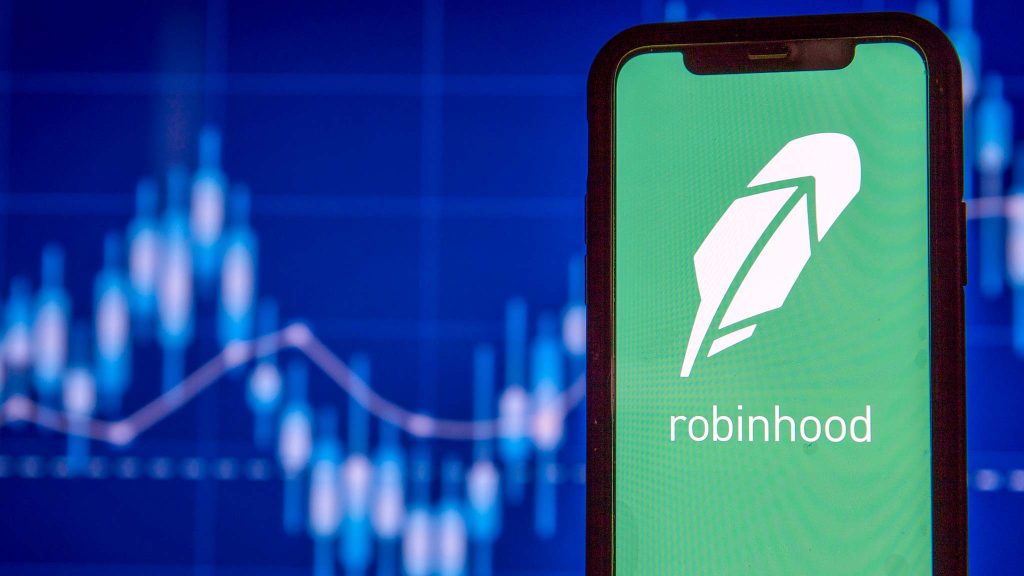Robinhood, the popular commission-free trading app, has revolutionized the world of investing. With its user-friendly interface and accessibility to both beginners and experienced traders, Robinhood has attracted millions of users. But have you ever wondered how Robinhood makes money while offering commission-free trading to its users? In this article, we’ll delve into the various revenue streams that power Robinhood’s business model, from payment for order flow to premium subscriptions and more.
Payment for Order Flow
One of the primary ways Robinhood generates revenue is through a practice known as “payment for order flow.” Payment for order flow occurs when a brokerage firm like Robinhood routes its customers’ buy or sell orders to market makers or high-frequency trading (HFT) firms in exchange for a fee. These market makers then execute the trades on behalf of Robinhood’s users.
How Does Payment for Order Flow Work?
When you place a trade on Robinhood, your order is sent to market makers like Citadel Securities, Virtu Financial, and others. These market makers compete to execute the order, often at fractions of a cent per share. While these amounts may seem minuscule on an individual trade basis, they add up significantly given the sheer volume of trades executed on Robinhood every day.
Why Market Makers Pay for Order Flow
Market makers pay for order flow because it provides them with a consistent and predictable source of trading volume. By executing a high volume of trades, market makers can profit from the spread—the difference between the bid and ask prices. This model benefits Robinhood as it allows them to offer commission-free trading to users while still earning money.
Margin Trading
Another source of revenue for Robinhood is margin trading. Margin trading allows users to borrow money from Robinhood to buy stocks or other securities. Users pay interest on the borrowed funds, and this interest income is a significant contributor to Robinhood’s revenue.
Interest on Margin Loans
When users borrow money through margin trading, Robinhood charges them an interest rate on the borrowed amount. The rate can vary depending on the amount borrowed and market conditions. This interest income can be substantial, especially when users are actively trading on margin.
Risks of Margin Trading
While margin trading can be profitable, it also comes with significant risks. Users who trade on margin are exposed to the potential for greater losses if their investments decline in value. Robinhood provides educational resources to help users understand these risks and encourages responsible margin trading.
Robinhood Gold Subscription
Robinhood offers a premium subscription service called Robinhood Gold, which provides additional features and benefits to users in exchange for a monthly fee. This subscription model is another key revenue stream for the company.
Features of Robinhood Gold
Robinhood Gold offers several benefits, including:
Extended trading hours: Robinhood Gold users can trade before the market opens and after it closes, providing them with more opportunities to react to news and market events.
Increased buying power: Subscribers get access to additional buying power through margin trading.
Level II market data: This premium feature provides users with more detailed information about stock orders and market depth.
Research reports: Robinhood Gold subscribers receive access to research reports from Wall Street analysts.
Monthly Subscription Fees
Robinhood Gold comes with a monthly subscription fee, which varies based on the tier of service chosen by the user. These fees contribute to Robinhood’s revenue and help offset the costs of providing the premium features.
Cash Management
In late 2019, Robinhood announced a cash management feature that allows users to earn interest on their uninvested cash. This feature essentially turns Robinhood into a competitive savings account provider, with a twist.
How Cash Management Works
When users deposit cash into their Robinhood account that is not invested in securities, Robinhood sweeps that cash into partner banks, where it earns interest. Robinhood then shares a portion of the interest income with the account holders.
Competitive Interest Rates
Robinhood aims to offer competitive interest rates on uninvested cash compared to traditional banks. The ability to earn interest on cash holdings can attract users and generate additional revenue through the interest income generated from the deposited funds.
Securities Lending
Robinhood engages in securities lending, another avenue for generating revenue. Securities lending involves lending out stocks and other securities from user accounts to other traders or institutions for a fee.
How Securities Lending Works
When users hold stocks in their Robinhood accounts, the company may lend those shares to other market participants, such as short sellers or institutions. In return, Robinhood earns fees from these lending arrangements.
Passive Income from Lending
This passive income from securities lending can be a lucrative revenue stream for Robinhood. It doesn’t require active trading or user participation, making it a relatively low-effort source of income.
Initial Public Offerings (IPOs)
Robinhood offers its users the opportunity to invest in initial public offerings (IPOs) through its app. While this feature may not be a primary revenue generator, it can contribute to Robinhood’s overall earnings.
IPO Access
Robinhood allows its users to participate in IPOs of companies that go public. Users can place orders for shares of the IPO at the offering price before the stock starts trading on the secondary market.
Commission Fees
Robinhood may charge a commission fee for IPO participation, which can be a source of income when companies go public through the platform.
Interest on Uninvested Cash
When users have cash sitting in their Robinhood accounts that is not invested in securities or part of the cash management program, Robinhood may earn interest on these balances. While this is not a primary revenue source, it still contributes to the company’s overall income.
Robinhood generates revenue through a variety of channels, allowing it to offer commission-free trading to its users while still operating a profitable business. Payment for order flow, margin trading, premium subscriptions, cash management, securities lending, IPO participation, and interest on uninvested cash all play a role in powering Robinhood’s business model. Understanding these revenue streams helps shed light on how Robinhood can sustain its operations and continue to innovate in the financial services industry. However, it’s essential for users to be aware of the potential risks associated with these revenue-generating practices and make informed decisions when using the platform.
Controversies and Criticisms
While Robinhood’s revenue model has allowed it to disrupt the traditional brokerage industry and attract millions of users, it has also faced significant controversies and criticisms.
Payment for Order Flow Controversy
The practice of payment for order flow has been a subject of scrutiny and debate within the industry. Critics argue that it may result in suboptimal execution prices for traders, as brokers may prioritize the compensation they receive from market makers over obtaining the best possible price for their users. In early 2021, Robinhood faced intense backlash when it temporarily restricted trading in certain highly volatile stocks like GameStop, leading to accusations that it was protecting the interests of market makers.
Regulatory Scrutiny
Robinhood’s business practices have attracted the attention of regulators, including the U.S. Securities and Exchange Commission (SEC) and the Financial Industry Regulatory Authority (FINRA). These agencies have been examining various aspects of the company’s operations, including its payment for order flow arrangements and its handling of outages and trading restrictions.
User Experience and Behavioral Concerns
While Robinhood has made investing more accessible to a broader audience, it has also faced criticism for gamifying investing and potentially encouraging inexperienced traders to engage in risky behavior. Concerns have been raised about the ease of use of the platform, which can lead users to trade impulsively or engage in day trading without fully understanding the risks involved.
Future Directions
As Robinhood continues to evolve and expand its offerings, it is likely to explore new avenues for revenue generation. Some potential directions for the company’s future growth include:
International Expansion: Robinhood has expressed interest in expanding its services to international markets, which could open up new revenue streams.
Additional Premium Features: Robinhood may introduce more premium subscription tiers or add features to its existing premium service to attract more paying customers.
Asset Management Services: Robinhood could explore offering asset management services, such as robo-advisory platforms, to help users build diversified portfolios and earn management fees.
Regulatory Compliance: To address regulatory concerns, Robinhood may make changes to its practices and operations to ensure compliance with industry standards and regulations.
Innovation and Product Development: Robinhood is likely to continue innovating and introducing new financial products and services to its platform, potentially diversifying its revenue streams further.
Robinhood’s ability to offer commission-free trading to its users while generating substantial revenue from various sources has made it a disruptive force in the financial industry. Payment for order flow, margin trading, premium subscriptions, cash management, securities lending, IPO participation, and interest income all contribute to the company’s financial success. However, Robinhood’s business model has also attracted controversy, regulatory scrutiny, and criticism, highlighting the need for transparency and responsible trading practices.
As Robinhood navigates the challenges and opportunities ahead, it will be essential for the company to strike a balance between innovation and regulatory compliance, ensuring that it continues to provide value to its users while addressing concerns related to user experience, transparency, and market integrity. In an ever-evolving financial landscape, Robinhood’s journey will continue to be closely watched by investors, regulators, and the broader public.







